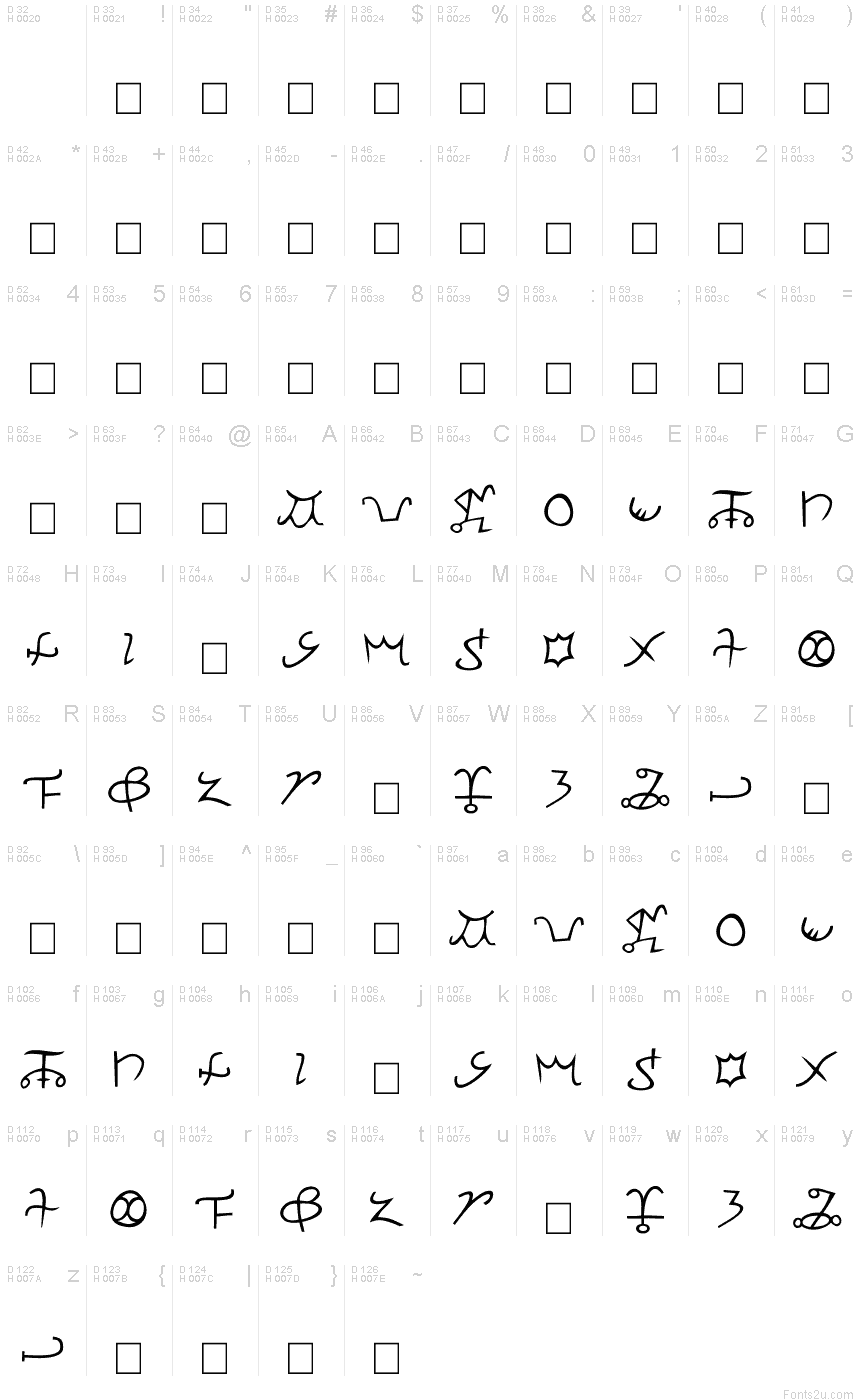Apollonian
TrueTypeБезкоштовна
- Hаголоси (часткові)
- Євро
Apollonian.ttf
Теги
Таблиця символів
Для перегляду різних таблиць символів для цього шрифту, будь ласка, скористайтесь меню, що розкривається.

Основна інформація про шрифт
Про авторські права
© 2002 Daniel U. Thibault. All Rights Reserved.
Сімейство шрифту
Apollonian
Підсімейство шрифту
Regular
Унікальний ідентифікатор підсімейства
Urhixidur:Apollonian Regular:2002
Повна назва шрифту
Apollonian
Ім´я настільної версії
Version 1.00; 2002 August 28
Ім´я поскрипт шрифта
Apollonian
Про виробника
Дизайнер
Daniel U. Thibault
Опис
Apollonian 2002 1.00
A late-medieval secret alphabet which has been recorded in a number of versions, usually with a Greek mapping (e.g. Blaise de Vignère's «Traité des chiffres», 1586). Though traditionally identified as the script of Apollonius of Tyana, there is no evidence to substantiate this claim.
Apollonius of Tyana was the most famous philosopher of the Greco-Roman world of the first century A.D. He devoted the major part of his long life to the purification of the many cults of the Roman Empire and to the instruction of the ministers and priests of its religions. A well-travelled contemporary of Jesus Christ, many "wonders" and "miracles" were consigned by his biographer, Flavius Philostratus (who wrote his Life of Apollonius circa 220 A.D.), fodder for the long-running theological debate on the nature of miracles.
The glyphs are taken from the «Dictionary of Occult, Hermetic and Alchemical Sigils»
by Fred Gettings (1981). This font supplies a Greek mapping in addition to a Latin one (with Chi mapped to C, Eta to H, Theta to Q, Upsilon to U, Omega to W, Psi to Y). There is no J nor V.
A late-medieval secret alphabet which has been recorded in a number of versions, usually with a Greek mapping (e.g. Blaise de Vignère's «Traité des chiffres», 1586). Though traditionally identified as the script of Apollonius of Tyana, there is no evidence to substantiate this claim.
Apollonius of Tyana was the most famous philosopher of the Greco-Roman world of the first century A.D. He devoted the major part of his long life to the purification of the many cults of the Roman Empire and to the instruction of the ministers and priests of its religions. A well-travelled contemporary of Jesus Christ, many "wonders" and "miracles" were consigned by his biographer, Flavius Philostratus (who wrote his Life of Apollonius circa 220 A.D.), fodder for the long-running theological debate on the nature of miracles.
The glyphs are taken from the «Dictionary of Occult, Hermetic and Alchemical Sigils»
by Fred Gettings (1981). This font supplies a Greek mapping in addition to a Latin one (with Chi mapped to C, Eta to H, Theta to Q, Upsilon to U, Omega to W, Psi to Y). There is no J nor V.
Розширена інформація про шрифт
Платформи підтримуються
ПлатформаКодування
ЮнікодЮникод 1.0 семантика
MacintoshЛатинська
MicrosoftТільки BMP юникод
Деталі шрифту
Створено2002-08-28
Перегляд1
Кількість гліфів273
Одиниць на Em2048
Права вбудовуванняДозволено вбудовування для редагування
Клас групиНе кваліфіковано
НасиченістьНапів-світлий
ШиринаСередній (нормальний)
Mac стильЖирні
НапрямокТільки гліфи спрямовані зліва направо + нейтральні
ВізерунокPегулярний
ВисотаНе моноширинний